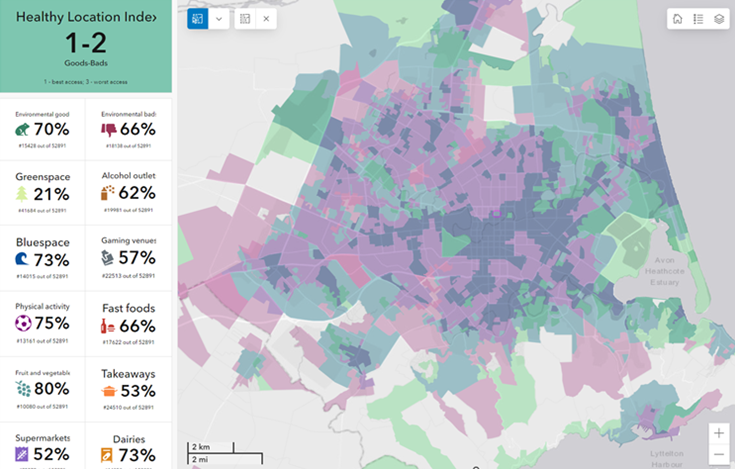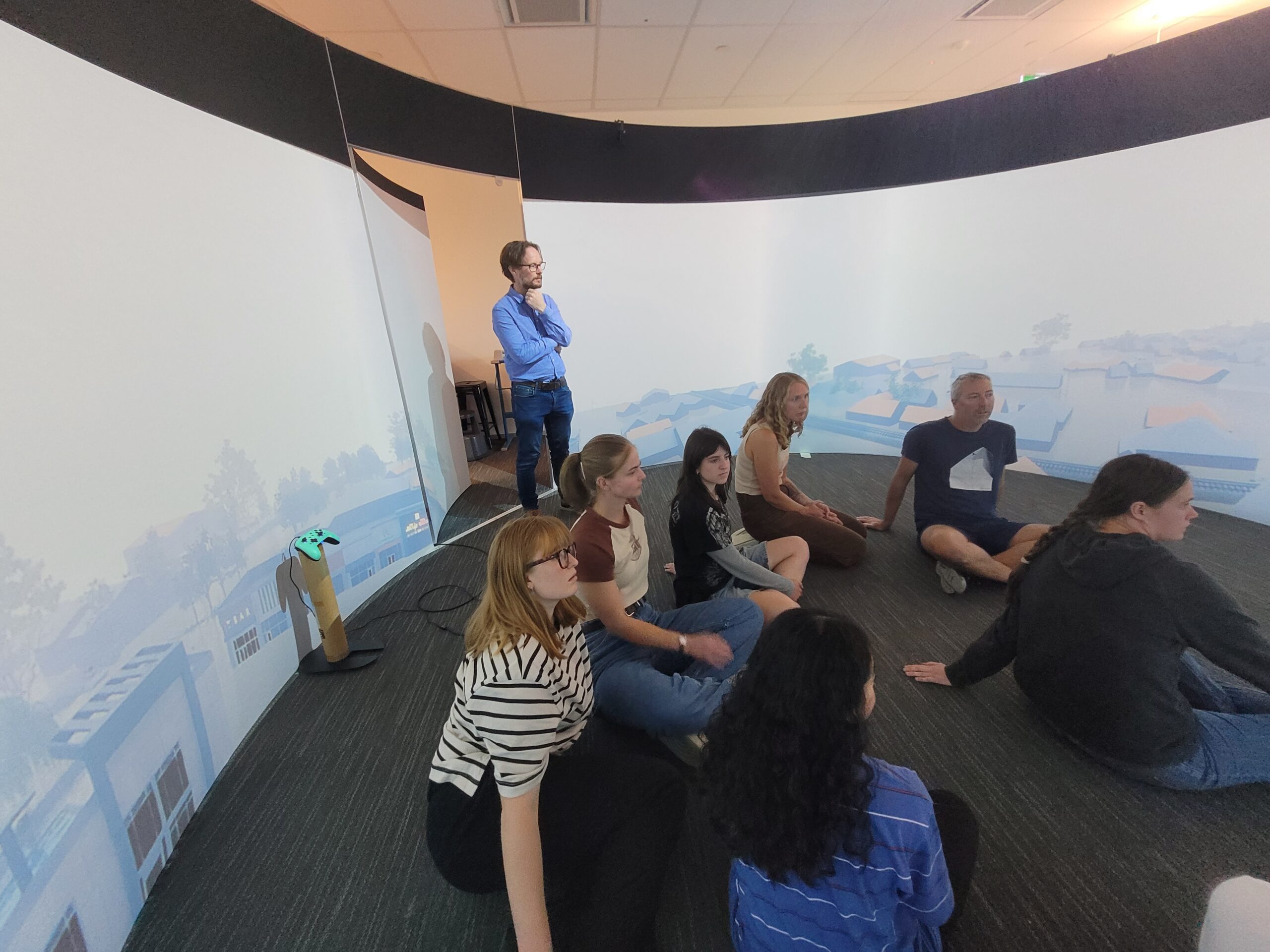Research team
Lukas Marek
Matthew Hobbs
Jesse Wiki
Malcolm Campbell
Simon Kingham
Duration
Ongoing from 2021
Project summary
Accounting for the co-occurrence of multiple environmental influences is a more accurate reflection of population exposure than considering isolated influences, aiding in understanding the complex interactions between environments, behaviour and health. Healthy Location Index describes how environmental ‘goods’ such as green spaces and environmental ‘bads’ such as alcohol outlets co-occur in Aotearoa New Zealand New Zealand.
We collected, processed, and geocoded on a comprehensive range of environmental exposures. Health-constraining ‘bads’ were represented by: (i) fast-food outlets, (ii) takeaway outlets, (iii) dairy outlets and convenience stores, (iv) alcohol outlets and (v) gaming venues. Health-promoting ‘goods’ were represented by: (i) green spaces, (ii) blue spaces, (iii) physical activity facilities, (iv) fruit and vegetable outlets, and (v) supermarkets.
The HLI was developed based on ranked access to environmental domains and can be used to investigate socio-spatial patterning by area-level deprivation and rural/urban classification.
Results showed environmental ‘goods’ and ‘bads’ co-occurred together and were patterned by area-level deprivation. The novel HLI shows that the most deprived areas of New Zealand often have the most environmental ‘bads’ and less access to environmental ‘goods’. These results further reinforce the need to embrace the multidimensional nature of neighbourhood and place not only when designing health-promoting places, but also when studying the effect of existingbuilt environments on population health.
The index, now publicly available (tinyurl.com/goodsbads), is able to capture both inter-regional and local variations in accessibility to health-promoting and health-constraining environments and their combination.
Outputs
Marek L., Hobbs M., Wiki J., Kingham S. and Campbell M. (2021) The good, the bad, and the environment: developing an area-based measure of access to health-promoting and health-constraining environments in New Zealand. International Journal of Health Geographics 20(1) http://dx.doi.org/10.1186/s12942-021-00269-x. (Journal Articles)



